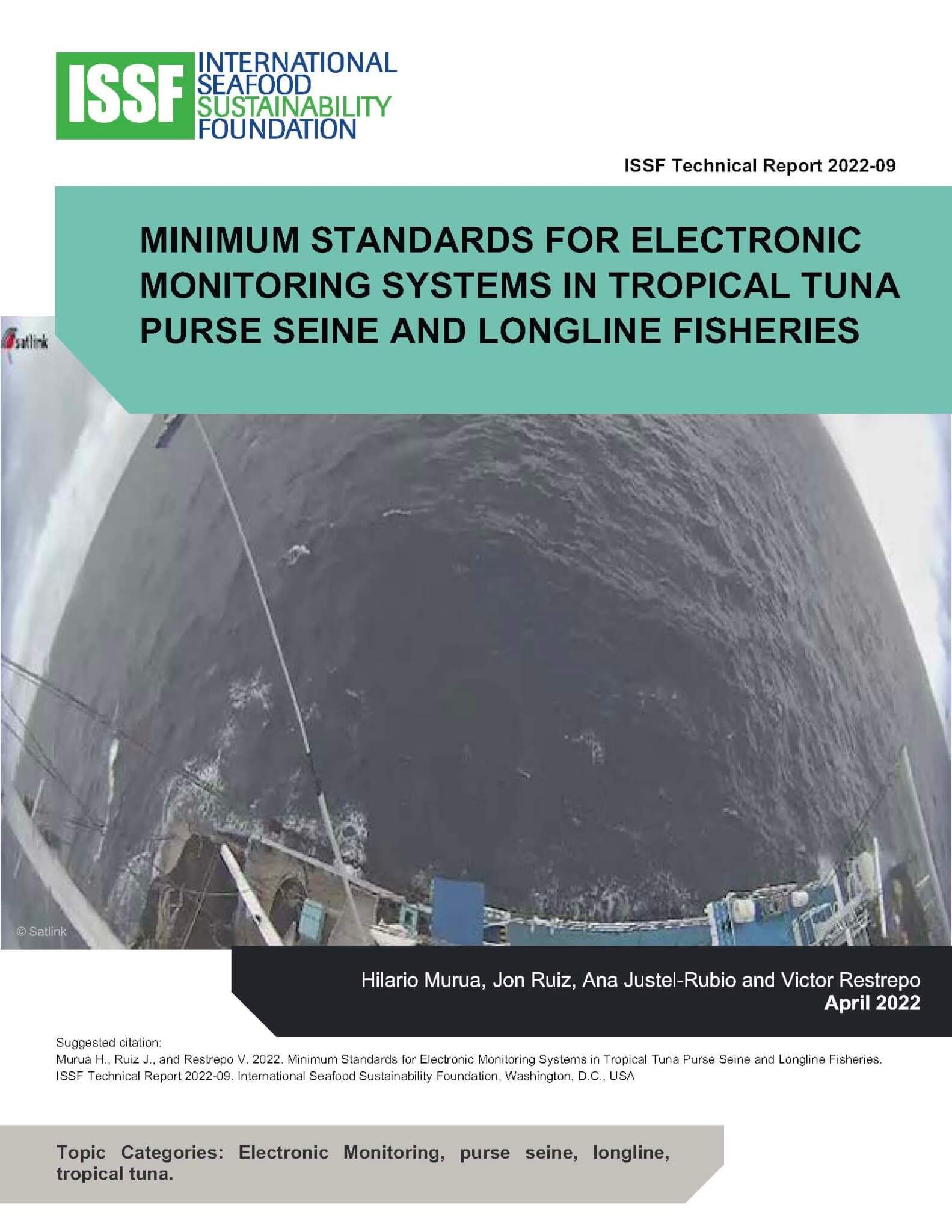Document: ISSF 2022-09: Minimum Standards for Electronic Monitoring Systems in Tropical Tuna Purse Seine and Longline Fisheries
In addition to commercial fishing vessel catch-and-effort information collected through logbooks and/or port-sampling, observer data are key to determining and verifying fishery activities. Electronic monitoring (EM) using cameras and other sensors is a proven technology widely used for various purposes on fishing vessels, primarily in industrial fleets.
EM systems include equipment that tracks a vessel’s position and activity and cameras that record key aspects of the fishing operations. While EM systems are not strictly intended for collecting observer data, they have been used extensively to obtain reliable information on fishery activities (including data collected usually by observers), such as on catches and their composition, bycatch (including of Endangered, Threatened and Protected species [ETP]), and vessel compliance with management measures.
EM pilot tests in different regions on tuna purse seiners and longline vessels, as well as in small-scale artisanal fisheries, have demonstrated the technology’s capability to improve the collection of tuna fishery data. However, before considering the wide application of EM, and particularly in tuna fisheries, minimum standards for the installation, collection, analysis, and storage of data in EM systems are needed. Moreover, it is also important to investigate the capability of EM systems to collect fishery data required (for scientific and/or compliance purposes) by the fishing authorities and tuna RFMOs.
This document aims to help advance the development of such minimum standards, including specifications and procedures, for the implementation of EM systems in tropical tuna purse-seine and drifting pelagic longline fisheries.
Downloads: 408 | Views: 3
